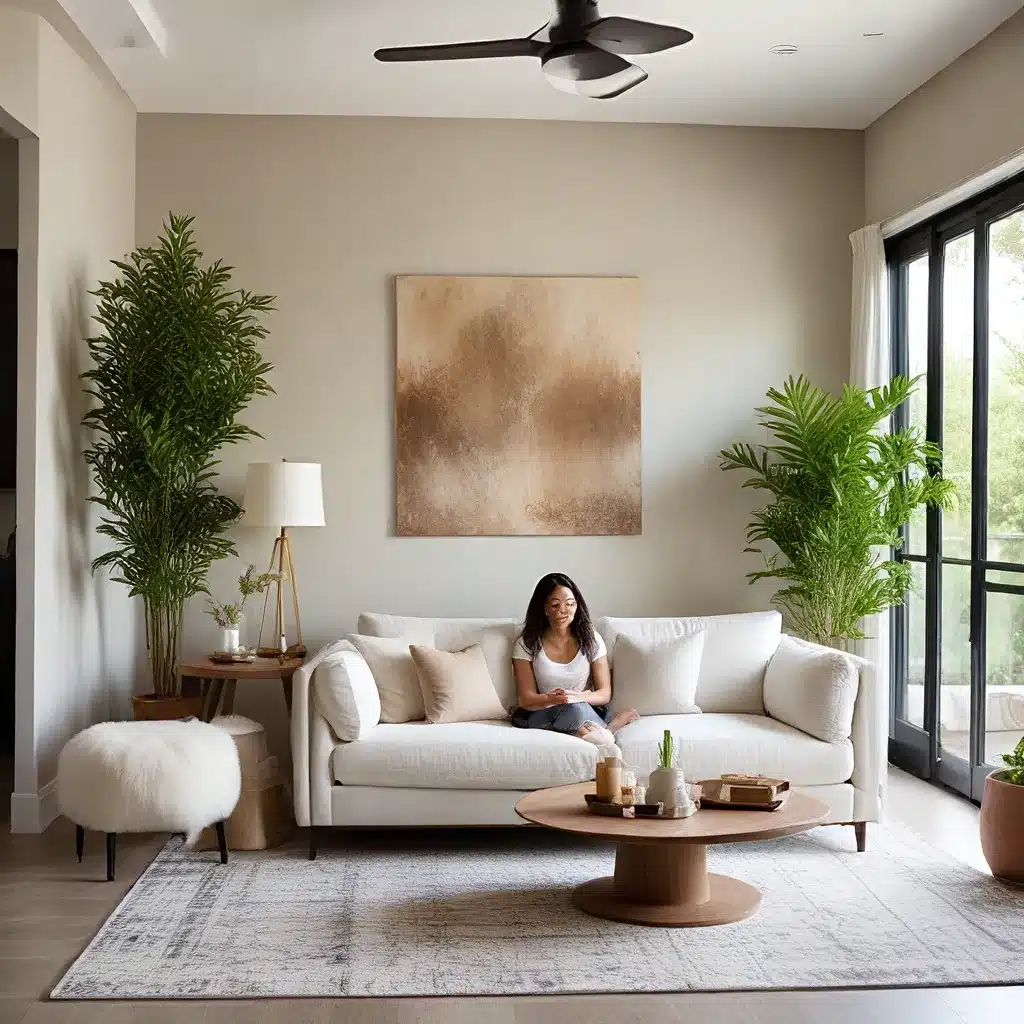
Designing for Wellbeing: Prioritizing Mindfulness and Intentional Living
As the world becomes increasingly fast-paced and technology-driven, the importance of creating wellness-focused living spaces has never been more essential. Interior design is no longer just about aesthetics; it’s about crafting sanctuaries that nourish the mind, body, and soul. By thoughtfully incorporating design elements that promote mindfulness, relaxation, and healthy living, homeowners can transform their living environments into oases of tranquility – havens where they can rejuvenate, recharge, and reconnect with themselves.
At the heart of this wellness-centric approach to interior design is a fundamental shift in priorities. Rather than chasing the latest trends or aiming for mere visual appeal, designers and homeowners alike are focusing on crafting spaces that support overall wellbeing. This entails carefully selecting materials, colors, and furnishings that foster a sense of calm, balance, and connection with nature. It also involves incorporating practical elements that encourage healthy habits, such as designated meditation or yoga areas, ergonomic workstations, and abundant natural light.
Embracing Biophilic Design: Bringing the Outdoors In
One of the most prominent wellness-focused design trends is biophilic design, which emphasizes the innate human affinity for nature. By incorporating natural elements into the home environment, biophilic design taps into our primal need for connection with the natural world. This can take many forms, from large windows that offer panoramic views of the outdoors to living walls adorned with lush foliage and natural materials like wood, stone, and plant-based textiles.
Urban Grace Interiors, a leading design firm, has embraced the principles of biophilic design in their projects, using natural textures, earthy color palettes, and abundant greenery to create calming, restorative spaces. “By blurring the lines between the interior and exterior, we can foster a deep sense of tranquility and balance within the home,” explains the firm’s founder, Sarah Williams.
Designing for Mindfulness: Intentional Spaces for Introspection
In addition to biophilic design, the wellness-focused interior design movement has also given rise to the creation of dedicated spaces for mindfulness and introspection. These can include meditation nooks, yoga studios, or simply cozy corners designed for quiet reflection and self-care.
“The home should be a sanctuary, a place where we can truly disconnect from the distractions of the outside world and reconnect with ourselves,” says Lydia Chen, a wellness-focused interior designer. “By designating areas for mindfulness practices, we’re empowering homeowners to prioritize their mental and emotional wellbeing alongside the physical aspects of their living spaces.”
These intentional mindfulness spaces often feature soothing color palettes, soft lighting, and comfortable, ergonomic furnishings that encourage relaxation and introspection. Homeowners may also incorporate aromatherapy diffusers, sound-dampening materials, and nature-inspired decor to further enhance the calming ambiance.
Designing for Healthy Habits: Practical Considerations for Wellness
While the aesthetic and emotional aspects of wellness-focused design are essential, practical considerations for healthy living are also crucial. This can include incorporating ergonomic furniture and adjustable workstations to support proper posture and minimize physical strain. Designated areas for exercise or meal preparation can also encourage active lifestyles and nutritious eating habits within the home environment.
Healthy Design, a leading authority on wellness-focused interior design, suggests that homeowners consider storage solutions that promote organization and minimize clutter, as cluttered spaces can contribute to feelings of stress and anxiety.
“When designing for wellness, it’s essential to address both the emotional and practical aspects of the home,” says Healthy Design’s lead designer, Emily Johnson. “By creating intentional, functional spaces that support healthy habits, we can empower homeowners to live more mindfully and prioritize their overall wellbeing.”
Luxury Meets Wellness: Elevating the Home Experience
As the demand for wellness-focused design continues to grow, luxury designers are rising to the challenge, incorporating high-end materials and bespoke furnishings that marry aesthetic appeal with restorative functionality. From custom-built meditation retreats to spa-inspired bathrooms, these wellness-infused luxury spaces offer homeowners the ultimate in relaxation and rejuvenation.
Luxury Daily reports that affluent homeowners are increasingly seeking out designers who can seamlessly integrate wellness elements into their living spaces, creating truly personalized havens that cater to their unique needs and preferences**.
“Luxury design is no longer just about opulence and grandeur,” explains Sarah Williams of Urban Grace Interiors. “Today’s discerning homeowners want spaces that not only look beautiful, but also nurture their overall wellbeing. By blending high-end materials and cutting-edge technology with mindfulness-focused design, we can elevate the home experience in ways that truly transform lives.”
Conclusion: Wellness-Focused Design for a Healthier, Happier Home
As the wellness movement continues to gain momentum, the role of interior design in supporting holistic wellbeing has become increasingly evident. By prioritizing design elements that promote mindfulness, encourage healthy habits, and foster a deep connection with nature, homeowners can transform their living spaces into sanctuaries of tranquility and rejuvenation.
Whether you’re building a new home or renovating an existing one, embracing wellness-focused design can enhance your quality of life in profound ways. From biophilic elements that soothe the senses to dedicated mindfulness spaces that nourish the soul, the possibilities for creating a healthier, happier home are endless. So why not embark on a journey of wellness-infused design and unlock the full potential** of your living environment?

